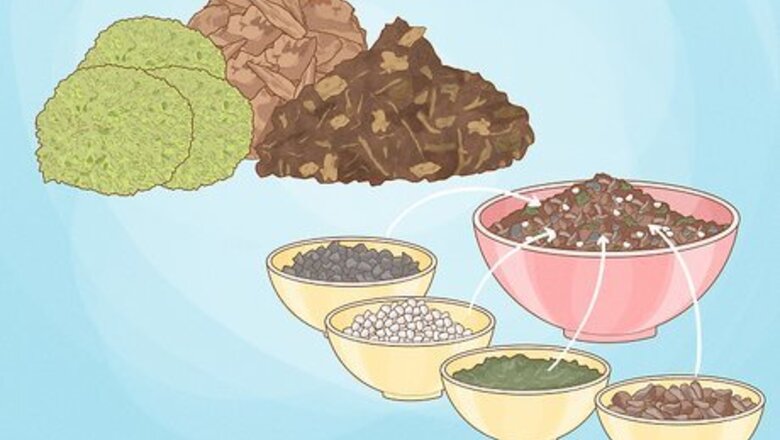
views
Potting Your Orchid
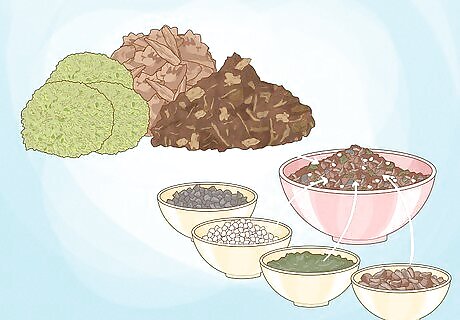
Choose a loose, airy potting medium like bark chips or moss. If you’re a first-time orchid grower, you might assume orchids like to grow in soil. However, most orchids’ roots need lots of air circulation and something sturdy to anchor onto. So, they prefer growing in a medium that’s loose and porous. Popular orchid growing mediums include bark chips, sphagnum moss, coconut husks, perlite, charcoal, lava rock, and styrofoam pellets.
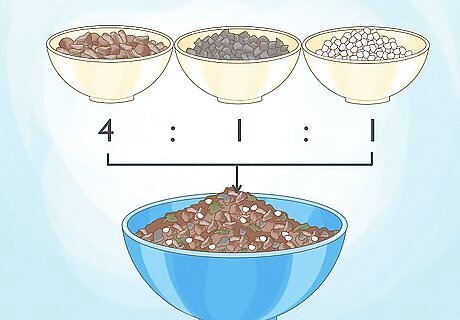
Create a potting mix out of several different mediums as an alternative. Orchids grow well in a blend of different porous growing mediums. Below are 2 basic potting mixes that work for most kinds of orchids. Just make sure to add water to your mix and strain it before using it for the best results. Make a fine potting mix, which is suitable for slipper orchids, most oncidiums, miltonias, and orchids with small roots that enjoy more moisture: 4 parts fine (grain) fir bark or fine (grain) coco husk 1 part fine (grain) charcoal 1 part perlite Make a medium potting mix, suitable for cattleyas, phalaenopsis, and other mature orchids: 4 parts medium (grain) fir bark or medium (grain) coco husk 1 part medium (grain) charcoal 1 part perlite If you're unsure of which mix to use, try the medium-grade potting mix before the fine-grade mix.
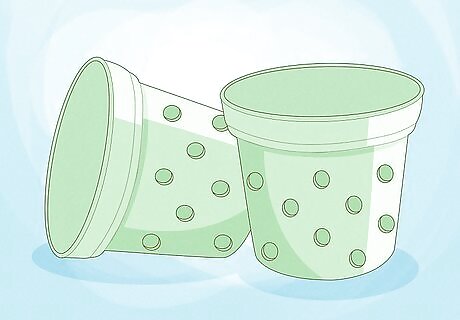
Select a snug pot with drainage holes. Many orchids are comfortable being slightly root-bound, so choose a small pot that fits its roots snugly inside. Make sure the pot has plenty of drainage holes on the bottoms and sides; orchids don’t like sitting in wet or soggy growing media. The following pots are great for growing orchids: Clear plastic pots, which provide more sunlight to the roots. These also allow you to easily inspect the orchid’s roots. Terracotta pots, which are very porous and dry quickly. As a plus, they’re typically inexpensive. Net pots, which have wire mesh to create a breathable environment. You can hang these to give your orchid better sunlight. Wooden pots, which are made of rot-resistant wood. Just line these pots with sheet moss before adding your potting mixture. If you don’t like the look of your pot, place it inside of a decorative pot. Avoid using decorative pots as your orchid’s growing pot, as the glaze can be harmful. Some orchids, such as cymbidiums, need longer pots to accommodate their long root systems.
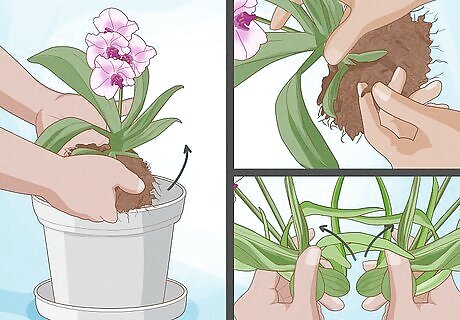
Place your orchid in the pot and fill it with your growing medium. Carefully remove the orchid from its original pot and cut off any dead or rotting roots with sterile shears or scissors. Add a small layer of your potting medium into the pot and place your orchid on top. Then, fill the rest of the pot with the media. Tie your orchid to a stake if it is leaning or falling over. Position the most mature section of roots towards the bottom of the pot and newer growth near the sides of the pot. Divide the root matter into several different sections, if needed, before placing the plant in its pot.
Orchid Growing Conditions
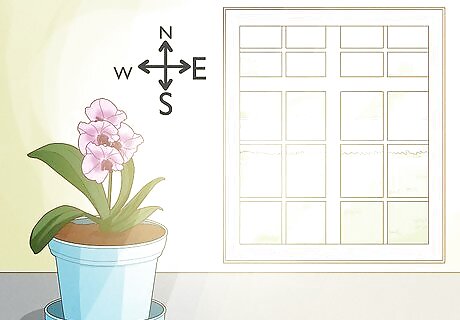
Set your orchid in a spot that gets bright, indirect light. Most orchids need a lot of light to thrive, so set your plant in a south or east-facing window. Direct sunlight can cause orchids to burn while too little light can prevent flowering, so avoid placing them in a west or north-facing window, respectively. Check your orchid's leaves to see if it's getting enough light. Healthy orchid leaves are light green with yellowish tones. If the leaves are dark green, the orchid isn't getting enough light. If the leaves are yellow, brown, or reddish, it means they're getting too much. Low-light orchids like Paphiopedilum, Phalaenopsis, and Oncidium, do best if they get northern or eastern light. Moderate to high-light orchids like Cattleya, Dendrobium, and Vanda prefer getting westerly or southerly light. If you only have direct light, place a sheer curtain in front of your window. If you don’t have a lot of light, place your orchid under a grow light.
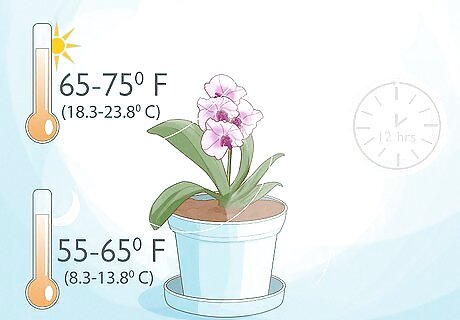
Keep your orchid around 65 to 85° F (18-29° C). Most orchids come from tropical climates, meaning that they love warmth but don’t tolerate cold well. While different species have different needs, most orchids grow well in temperatures between 65 to 85° F (18-29° C). If you’re growing orchids outside, make sure your variety can withstand your area’s average temperatures.
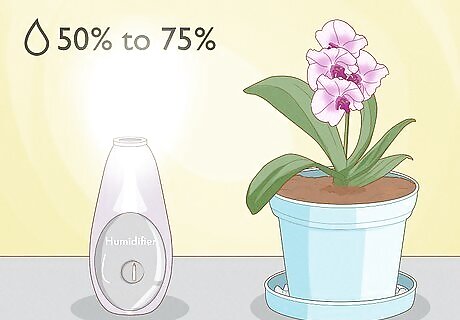
Maintain humidity around 50 to 75%. Because most orchids' are native to the tropics, they love humidity. Either place a humidifier near your orchid or set its pot on top of a shallow tray filled with water and pebbles. Use a hygrometer to monitor your orchid’s humidity. Or, download a hygrometer app on your smartphone to check the humidity.
Caring For Orchids
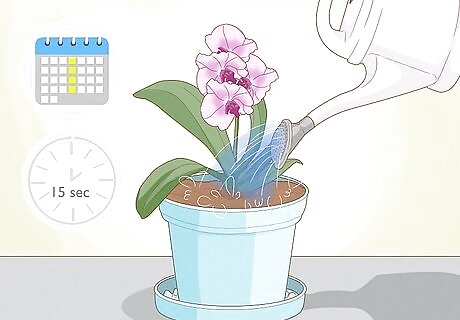
Water your orchid when the growing medium feels dry. Orchids don’t do well when they’re overwatered, so allow their growing medium to dry out before you water it again. Simply stick your finger in the soil to see if it feels dry. Then, water your plant for about 15 seconds and let the excess water run out of the drainage holes. If you have a plastic pot, look at your plant’s roots. Gray, shriveled roots mean it’s thirsty, while plump white or green roots mean it isn’t. Lift your orchid’s pot to tell if it needs water, too. A heavy pot means the potting medium is still soaked with water, while a light pot means your plant is thirsty. In the summer, you may need to water your orchid more often. If your orchid has thick leaves, it typically needs more water. If it has bulky faux bulbs, it typically needs less water. Yellow leaves are typically a sign your plant is being overwatered, while drooping leaves are usually sign it’s being underwatered. While many people recommend watering orchids about once per week, your plant’s growing medium, light, and humidity all affect how often it needs water. So, it’s best to regularly check the potting medium’s dryness.
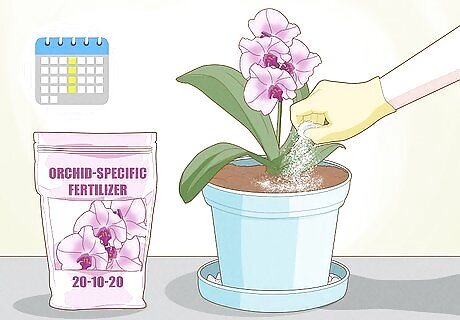
Feed your orchid an orchid-specific fertilizer in the spring and summer. Fertilize your orchid about once per week while it is actively growing. Simply dilute a balanced, liquid fertilizer (like 20-10-20) to ¼ strength and water your plant. About once per month, do not fertilize your orchid and simply flush its soil with water. Too much fertilizer can burn the roots and prevent flowering. Keep the orchid in indirect sunlight during the spring and summer. When a new flower spike grows, brace it with a tie or stake when it’s 5 inches (13 cm) tall. Note: Do not fertilize orchids in the winter or when they’re not actively growing. This can potentially harm your plant.
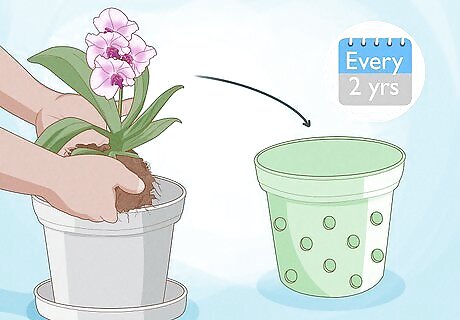
Repot your orchids about every 2 years. Most orchids only need to be repotted when their potting medium starts to decompose, which is generally every 2 years. You may need to repot your orchid sooner if the plant’s roots are outgrowing its pot, the lower leaves are dying, or its roots are dying. Choose a slightly larger pot to repot your orchid in. Remove any dead, dying, or mushy roots with clean shears or scissors before repotting your orchid. Warning: Wait to repot your orchid until its flowers die and fall off. Repotting your orchid as it's blooming can cause the flowers to die.
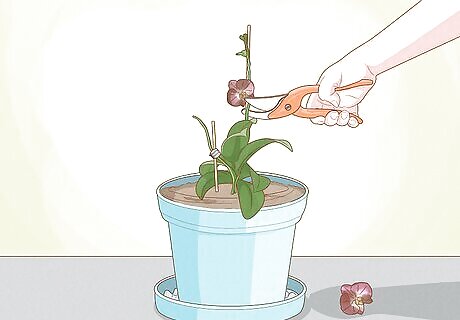
Prune off dead leaves and the flower stalk after blooming. Use a sterile pair of pruning shears or scissors to snip off any dying leaves or dead, brown leaves. After your orchid blooms and the flowers die, cut down the flower stalk to the base of the plant. Note: If you’re growing a Phalaenopsis orchid, cut the flower stalk above the second node on the stem. These orchids can bloom from the same stalk. It’s normal for most orchids’ flower stalks to turn brown after the flowers die. This can also be due to overwatering or too much light, so ensure your plant is getting the care it needs.
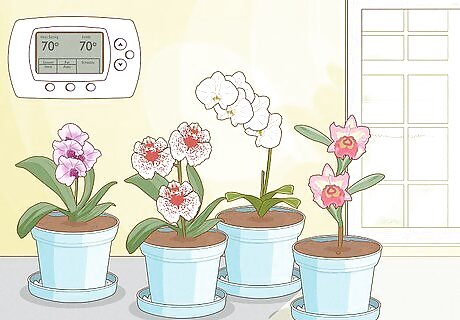
Look into any specific needs that your orchid species may require. Keep in mind that each species of orchid has different care needs; no one orchid is the same. While these general care tips can keep your orchid happy and growing, search for your specific species online to learn about any specific requirements it has.
Orchid Pests and Diseases
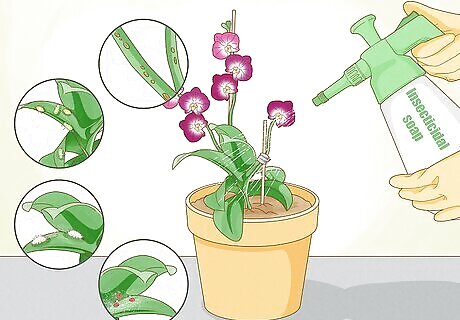
Get rid of pests with insecticidal soap or horticultural oil. Regularly inspect your plant’s leaves for scale insects, mealybugs, or spider mites. If you notice discolored leaves, a black sooty mold, or stickiness, treat the leaves with insecticidal soap or horticultural oil. Orchids aren’t very prone to pests, but they can become an issue.
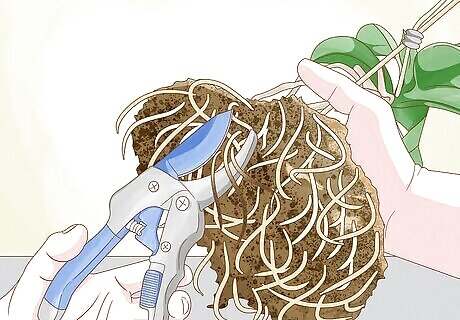
Cut off shriveled, mushy roots if your orchid isn’t doing well. Root rot is the most common disease that affects orchids. This usually occurs when your plant is overwatered or it sits too long in moisture. Simply take your plant out of its pot, cut off any shriveled, mushy roots, and repot it in a fresh potting medium. Shriveled or wrinkled leaves can be a sign that your plant isn’t getting enough water, which is typically due to root rot.
Getting Orchids to Rebloom
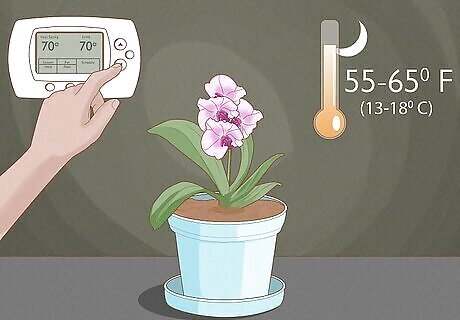
In early fall, drop the temperature by 10 to 15 degrees at night. In nature, cooler nighttime temperatures trigger orchids to rebloom. Starting in the early fall, lower the temperatures at night to 55 to 65° F (13-18° C) for about 3 to 4 weeks. Your orchid will start growing a new flower spike when it’s getting ready to rebloom. Most orchids bloom once per year. Make sure your orchid gets enough light, water, and fertilizer to ensure it reblooms, too. If your orchid drops its buds, it might be stressed. Make sure its receiving enough water, light, and humidity and that it’s not near any drafts.
Propagating Orchids
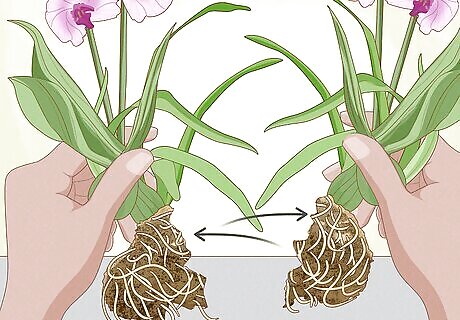
Divide and cut your orchid into sections to get more orchid plants. The best way to propagate orchids is by division. Take your orchid out of its pot and gently separate each stem or bud into its own section. Then, use a sterile pair of shears or scissors to cut the sections off of the main plant. Propagate your orchid before it starts actively growing and blooming. This gives your plant enough time to recover and flower.
Choosing an Orchid to Grow
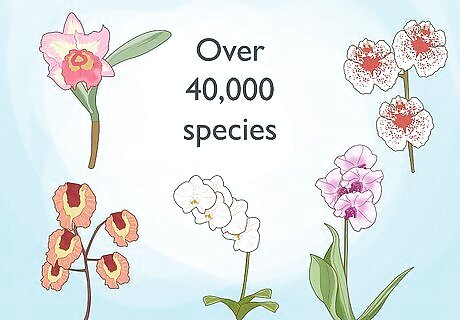
Select an easy orchid to grow if you’re a beginner. Phalaenopsis (moth), Paphiopedilum (slipper), and Cattleya (corsage) orchids are some of the most popular orchids and amongst the easiest to grow. However, there are over 40,000 species of orchids! This means that there’s likely an orchid for you that fits your area’s climate and light levels. Dendrobium (cane) and Oncidium (dancing lady) orchids are 2 other popular and easy-to-grow plants. Dendrobiums are typically epiphytes, meaning that they grow on other plants. Oncidiums are characterized by column wings and a callus at the lip of the flower. Orchids are typically grouped by the temperatures they like: Cool orchids prefer 60-75° F (15-23° C) days and include Cymbidium, Odontoglossum, Miltonias, and some Paphiopedilum and Dendrobium. Intermediate orchids prefer 70-80° F (21-27° C) days and include Cattleya, Oncidium, Paphiopedilum, Dendrobium, and some Phalaenopsis. Warm orchids prefer 75-85° F (24-29° C) days and include Doritis, Phalaenopsis, and some Paphiopedilum and Dendrobium. Talk to an employee at your local nursery or visit your local orchid society to find out what your specific orchid species needs to grow best.


















Comments
0 comment